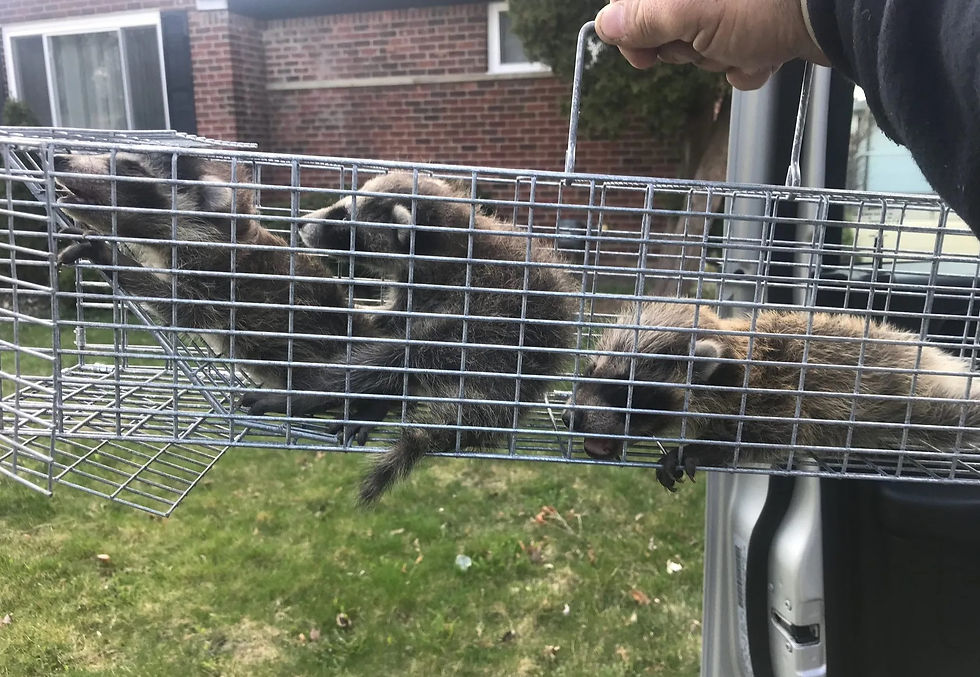Effective Strategies for Nuisance Animal Control
- Matthew Abraham
- Jun 7, 2024
- 3 min read

Nuisance animals can disrupt daily life, damage property, and pose health risks. Managing these uninvited guests requires a balanced approach to prioritizing safety and humane practices. Effective nuisance animal control is essential, whether dealing with raccoons rummaging through your garbage, squirrels nesting in your attic, or deer munching on your garden. Here, we explore practical nuisance animal control strategies to keep these critters at bay.
Understanding Nuisance Animals
Nuisance animals are wildlife that invade human habitats, causing problems. Common culprits include:
Raccoons: Known for their skill and curiosity, raccoons can topple trash cans, create messes, and even find their way into homes.
Squirrels: These agile rodents often seek shelter in attics, chewing through wires and insulation.
Deer: Though beautiful, deer can decimate gardens and crops.
Skunks: Aside from their notorious spray, skunks dig up lawns for grubs.
Bats: While beneficial for insect control, bats in the attic can be a health concern due to their droppings.
Birds: Species like pigeons and starlings can damage buildings and spread diseases.
Prevention: The First Line of Defense
The best way to handle nuisance animals is to prevent them from becoming a problem in the first place. Here are some effective preventive measures:
Secure Your Trash: Use sturdy trash cans with tight-fitting lids to prevent animals like raccoons and skunks from rummaging through your waste.
Seal Entry Points: Inspect your home for potential entry points, such as gaps in the roof, vents, or foundation cracks. Seal these openings with appropriate materials to prevent animals from getting inside.
Remove Food Sources: Do not leave pet food outside, and promptly clean up fallen fruit or nuts from trees in your yard. Bird feeders should be placed away from the house and high enough to prevent easy access by larger animals.
Install Fencing: For gardens and crops, install fencing to keep deer and other larger animals out. Electric fences can be particularly effective.
Use Repellents: Commercial repellents, such as those that mimic predator scents, can deter animals from entering your property. Ultrasonic devices can also be effective against certain species.
Humane Trapping and Relocation
If prevention fails, humane trapping and relocation can be an effective way to deal with nuisance animals. Here's how to do nuisance animal control responsibly:
Know the Laws: Before trapping any animal, familiarize yourself with local wildlife laws. Some species are protected, and specific regulations regarding trapping and relocation may exist.
Use Humane Traps: Live traps, which capture animals without harming them, are the best option. Ensure the trap is appropriately sized for the animal you're targeting.
Check Traps Regularly: Once a trap is set, check it frequently to minimize stress on the captured animal and reduce the risk of harm.
Relocate Responsibly: When relocating an animal, choose a suitable habitat far from residential areas. Ensure the location provides adequate food, water, and shelter for the animal.
Professional Nuisance Animal Control
In some cases, professional nuisance animal control help may be necessary. Wildlife control experts have the knowledge and tools to handle complex situations safely and effectively. They can:
Conduct thorough inspections to identify and address potential entry points.
Use advanced techniques for humane trapping and relocation.
Provide long-term solutions and preventive measures to keep nuisance animals at bay.
Conclusion
Nuisance animal control is crucial to maintaining a safe and comfortable home environment. By implementing preventive measures, using humane trapping and relocation methods, and seeking professional nuisance animal control assistance, you can effectively manage and mitigate the impact of nuisance animals. Remember, the goal is to coexist with wildlife in a way that respects their natural behaviors while protecting your property and health.

Comentarios